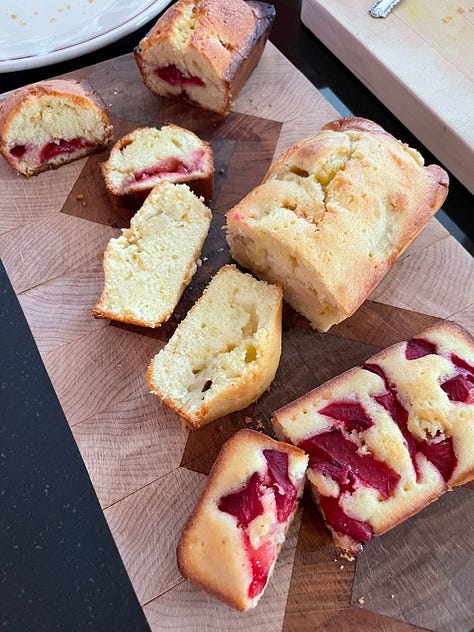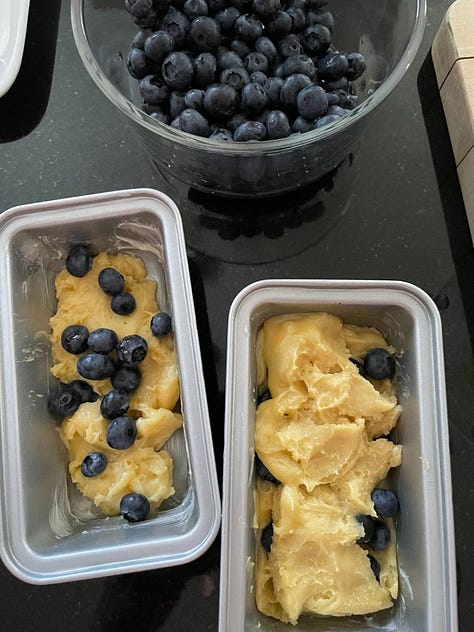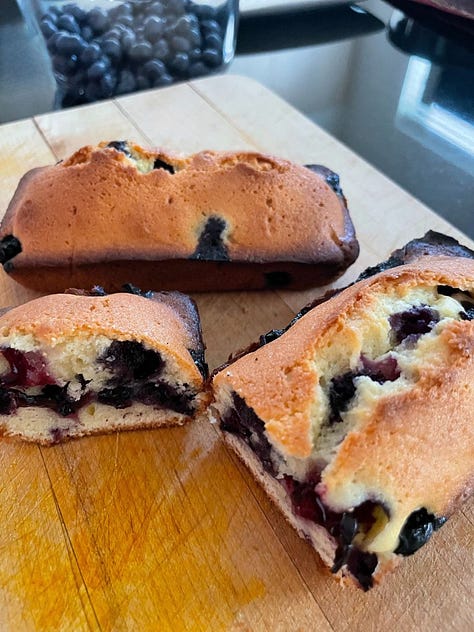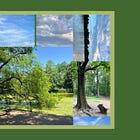Spotlight on the LibraryReads Program
It's Very Similar to Indie Next, But Instead of Booksellers, Public Library Staffers Cast the Votes
In my last newsletter, I wrote about the annual “ALA” conference, which brings together librarians from all over the country. With librarians and libraries top-of-mind, I wanted to highlight an important library-focused program that can have a very solid impact on a book campaign: LibraryReads.
LibraryReads is very similar to the Indie Next program, the key difference being that while booksellers vote for Indie Next, it’s public library staffers (including volunteers!) that cast votes for LibraryReads. But both are monthly lists which showcase books that receive the most votes from their qualified, respective voters. (Read my 4-part series on Indie Next here.)
You can see July’s LibraryReads list on the LibraryReads.org main page, and the full archive here (dating back to 2013).
Some nuts and bolts info on the program:
— The list features only 10 titles per month, both fiction and nonfiction. It’s adult books only, so no YA, books for young readers, or children’s books.
— Hitting the LibraryReads list is going to be a major boon to librarians across the country becoming aware of your book, as well as library patrons. The program is well established, and is weaved into library networks, publications, and promotions/showcases that reach many people. It’s also a great thing for your publisher to be able tout as part of their sell-in efforts and general outreach.
— The deadline for each month’s list is the first day of the previous month. So the deadline for the September list is August 1. This is different from Indie Next, where the deadline is about TWO months before any given month’s list. So the deadline for the September Indie Next list was on June 23, 2025 — already passed. It’s good to know this differential, because if your campaign includes an active push for votes for both Indie Next and LibraryReads, you have an additional month with the LibraryReads effort.
— In terms of who can vote for LibraryReads — it’s not just for librarians with an MLS. According to the FAQ, “Anyone who is affiliated with a public library, at any staff level, can vote for LibraryReads” — and this includes volunteers.
— Note that voting happens via NetGalley or Edelweiss, which also serve as ways for booksellers to vote for Indie Next. All the more reason for authors to better understand these industry platforms, which play a key role in how publishers, booksellers, and librarians convey and share information about titles. I recently did a whole post on NetGalley, and full details on how voting works for LibraryReads can be found here.
— Unless an author has an expansive and established network in the public library space, a LibraryReads campaign is mainly going to be a publisher driven effort. A publisher’s library reps and library-focused marketing efforts coalescing around a selected title will usually be the key to garnering enough votes to make the list. In addition to regularly scheduled meetings and exchanges with library acquisition depts/contacts, there are many library conferences (like ALA, as well as regional shows) where publishers get the chance to interface with librarians. Publishers also do promotions and advertising with trade publications like Library Journal, Publishers Weekly, and Shelf-Awareness to showcase seasonal highlights, encouraging pre-pub reads and galley requests, and often include a “Vote for LibraryReads” call-to-action on a particular title.
— As an author, you can advocate with your publisher to get on programming at ALA, as discussed in the previous newsletter, but that’s not guaranteed. If you can make that happen, wonderful — because it does pay off for things like making the LibraryReads list. (I have fond memories of examples of this, including author Cadwell Turnbull doing a panel and signing books and meeting a ton of librarians at ALA, and then months later, his second novel (No Gods, No Monsters) made the LibraryReads list (and Indie Next, too).
— But something all authors can do and make happen is proactive outreach to their existing librarian network, in tandem with an effort to grow it by connecting with new library folks (via social media, for example). And start local — connect with the team at your local library, and make a point of attending their programs. And when you are planning events for your forthcoming book, do your best to incorporate a library event in the line-up.
— By the way, did you know that there is an active chat with library folks about galley/pre-publication reads — It’s the EarlyWord GalleyChat, and it serves as a way for librarians to share with each other what books are on their radar. It takes place on Bluesky on the first Thursday of the month from 4 to 5 pm ET — search for the hashtag #ewgc. I really love this — it’s not about influencer chasing, just good old-fashioned community-driven online info-exchanging. Note that all the titles discussed are collected into a shared spreadsheet, and they also collect them into an Edelweiss catalog (a good example of how Edelweiss is used to curate and convey info). Amazing collaboration and sharing! Learn more about this program at EarlyWord.com.
In terms of the Publishing Timeline, the effort to build awareness and get pre-pub reads by library staffers for a LibraryReads campaign begins right when galleys are available and your book is posted up on NetGalley and Edelweiss. This essentially mirrors the Indie Next effort timetable. Once again, you can see the key role of early planning and pre-pub efforts in terms of determining a book’s momentum and how it’s likely going to perform in the marketplace at the time of launch.
I’ll leave it there for now. And look, with only 10 books a month making the LibraryReads list, one that combines both fiction and non fiction titles, it’s clear that it’s a tall order to make the cut. But even if you don’t make the list, a LibraryReads effort still pays dividends. By incorporating librarian focused outreach into your plan, you are making connections and building awareness in a space that is vitally important to the long-game of your author career. It can lead to in-person and virtual library programming, conference panels, website/newsletter features and more. And most of all, it builds up your network of librarian connections, which has to be one of the best parts about being an author member of the overarching literary community.
IN CASE YOU MISSED IT
Read the pervious newsletter on ALA, and be sure to check out the insightful comments:
shared about the Zine Pavilion at ALA, and provided some excellent advice on library event strategy for authors.TROY FORD’S LAMB IS THE JULY QLP BOOK CLUB SELECTION
Wonderful to see
’s debut novel selected as The Queer Love Project Book Club pick for July. And today (Sunday, July 13) at 2 pm ET, you can join Troy and for a conversation about the book during a Substack Live. Learn more about Lamb here, and be sure to subscribe to Troy’s newsletter, as well as The Queer Love Project.QUICK ROUND-UP OF SOME EXCELLENT RECENT POSTS
Very inspiring post from
, about seeking out a certain type of story and not quite being able to find it on the shelves, and then writing that story herself. Huge congrats to Haili on the book deal!We’re heading into the mid-month range, but there’s still plenty of time to check out
’s July showcase of opportunities for writers — it’s an expansive, expertly curated list.One of the major annual mystery/crime/thriller conferences — ThrillerFest — took places last month, and
shared a fantastic re-cap in her recent Imposter Syndrome newsletter. Read it here. If you’ve got a mystery/crime/thriller novel coming out in 2026 and are currently looking at conferences to attend and to possibly secure a panel opportunity, ThrillerFest is a good one to have on your radar.


Thanks as always for reading, sharing, and subscribing. I’ve been drawing some inspiration from playing fast and loose with ingredients and variations while baking. Above are some snaps of a pound cake experiment — same batter, but adding in various fruits (plums, bananas, blueberries, peaches) and honey, either layering or just mixing it in. Note this recipe does not call for any fruit, or honey. Experimenting and adding in your own variations is the way to go, baking or otherwise. It certainly doesn’t always work out, but it usually leads to some surprising and delightful outcomes.
—
ABOUT THE WRITER OF THIS NEWSLETTER
I’m
, an author and longtime book publishing professional who has held leadership positions at publishers such as Penguin Random House, HarperCollins, Blackstone Publishing, and Abrams Books. Currently I’m working directly with authors and publishers as an independent marketing and publicity consultant to grow their platforms and successfully launch their books. Visit my website to learn about the book marketing and publicity services I provide, and how we can work together.





Always so grateful for the library love, and the emphasis on building community!
Such helpful information--thank you! And thank you also for the generous shout-out to my Substack!